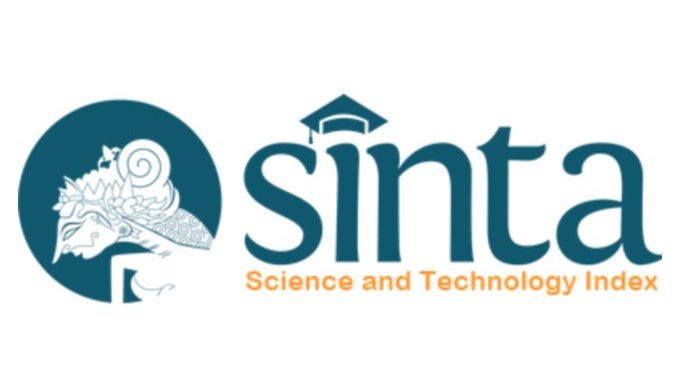Achalasia in a Female Adolescent
DOI:
https://doi.org/10.55175/cdk.v50i2.527Keywords:
Achalasia, esophageal smooth muscle, motility disorderAbstract
Achalasia is an esophageal smooth muscle motility disorder due to relaxation failure of the lower esophageal sphincter. This condition is rarely found in children; 2-5% cases occur in less than 16-year old. Case: A 16-year-old girl presented with chief complaint of regurgitation. She also complained of dysphagia, weight loss, and general weakness. Her general appearance was weak, underweight, and decreased skin turgor. Barium esophagogram demonstrated a narrowing of esophagus lumen distal to the esophagogastric junction with a “bird’s beak” appearance or rat tail sign. Esophageal achalasia was diagnosed and managed with open (laparotomy) surgical myotomy and fundoplication. Post-operative diet arrangement was carried out gradually and the patient was discharged 4 days post-surgery.
Akalasia merupakan gangguan motilitas otot polos esofagus yang terjadi akibat kegagalan relaksasi lower esophageal sphincter (LES). Kondisi ini jarang ditemukan pada anak-anak; 2-5% kasus pada anak berusia di bawah 16 tahun. Kasus: Seorang remaja perempuan 16 tahun datang ke poliklinik bedah anak dengan keluhan utama regurgitasi. Anak juga mengeluh disfagia, penurunan berat badan, dan kelemahan umum. Keadaan umum anak lemah, berat badan rendah, dan penurunan turgor kulit. Esofagogram barium menunjukkan penyempitan lumen esofagus distal terhadap esophagogastric junction dengan tampakan “bird’s beak” atau tanda rat tail. Akalasia esofagus didiagnosis dan ditatalaksana dengan pembedahan laparotomi miotomi dan fundoplikasi. Pemulihan diet pasca-operasi secara perlahan dan pasien dipulangkan 4 hari pasca pembedahan
Downloads
References
Momodu II, Wallen JM. Achalasia. Clin Basic Neurogastroenterol Motil [Internet]. 2021 Aug 9 [cited 2022 Feb 10];213–23. Available from: https://www.ncbi.nlm.nih.gov/books/NBK519515/
O’Neill OM, Johnston BT, Coleman HG. Achalasia: A review of clinical diagnosis, epidemiology, treatment and outcomes. World J Gastroenterol WJG. 2013;19(35):5806.
Wadhwa V, Thota PN, Parikh MP, Lopez R, Sanaka MR. Changing trends in age, gender, racial distribution and inpatient burden of achalasia. Gastroenterol Res. 2017;10(2):70–7.
Tashiro J, Petrosyan M, Kane TD. Current management of pediatric achalasia. Transl Gastroenterol Hepatol. 2021;6(I).
Achem SR, Crittenden J, Kolts B, Burton L. Long-term clinical and manometric follow-up of patients with nonspecific esophageal motor disorders. Am J Gastroenterol (Springer Nature). 1992;87(7).
Fisichella PM, Raz D, Palazzo F, Niponmick I, Patti MG. Clinical, radiological, and manometric profile in 145 patients with untreated achalasia. World J Surg. 2008;32(9):1974–9.
Allaix ME, Patti MG. Achalasia: Practice Essentials, Background, Pathophysiology [Internet]. Medscape. 2017 [cited 2022 Feb 10]. Available from: https://reference.medscape.com/article/169974-overview
Radulovic M, Schilero GJ, Yen C, Bauman WA, Wecht JM, Ivan A, et al. Greatly increased prevalence of esophageal dysmotility observed in persons with spinal cord injury. Dis Esophagus. 2015;28(7):699–704.
Sato Y, Fukudo S. Gastrointestinal symptoms and disorders in patients with eating disorders. Clin J Gastroenterol. 2015;8(5):255–63.
Herbella FAM, Colleoni R, Bot L, Vicentine FPP, Patti MG. High-resolution manometry findings in patients after sclerotherapy for esophageal varices. J Neurogastroenterol Motil. 2016;22(2):226–30.
Smits M, Van Lennep M, Vrijlandt R, Benninga M, Oors J, Houwen R, et al. Pediatric Achalasia in the Netherlands: Incidence, Clinical Course, and Quality of Life. J Pediatr [Internet]. 2016;169:110-115.e3. Available from: http://dx.doi.org/10.1016/j.jpeds.2015.10.057
Gyawali CP. Achalasia: new perspectives on an old disease. Neurogastroenterol Motil [Internet]. 2016 Jan 1 [cited 2022 Feb 10];28(1):4–11. Available from: https://onlinelibrary.wiley.com/doi/full/10.1111/nmo.12750
Gockel I, Becker J, Wouters MM, Niebisch S, Gockel HR, Hess T, et al. Common variants in the HLA-DQ region confer susceptibility to idiopathic achalasia. Nat Genet 2014 468 [Internet]. 2014 Jul 6 [cited 2022 Feb 10];46(8):901–4. Available from: https://www.nature.com/articles/ng.3029
Goyal RK, Chaudhury A. Physiology of normal esophageal motility. J Clin Gastroenterol. 2008;42(5):610.
Laurino-Neto RM, Herbella F, Schlottmann F, Patti M. Evaluation of esophageal achalasia: from symptoms to the Chicago classification. ABCD Arq Bras Cir Dig (São Paulo). 2018;31.
Makharia GK, Seith A, Sharma SK, Sinha A, Goswami P, Aggarwal A, et al. Structural and functional abnormalities in lungs in patients with achalasia. Neurogastroenterol Motil. 2009;21(6):603-e20.
Laurino-Neto RM, Herbella F, Schlottmann F, Patti M. Evaluation of esophageal achalasia: From symptoms to the chicago classification. Arq Bras Cir Dig. 2018;31(2):25–8
Krill JT, Naik RD, Vaezi MF. Clinical management of achalasia: current state of the art. Clin Exp Gastroenterol. 2016;9:71.
Nguyen VX, Le Nguyen VT, Nguyen CC. Appropriate use of endoscopy in the diagnosis and treatment of gastrointestinal diseases: up-to-date indications for primary care providers. Int J Gen Med. 2010;3:345.
Stavropoulos SN, Friedel D, Modayil R, Iqbal S, Grendell JH. Endoscopic approaches to treatment of achalasia. Therap Adv Gastroenterol. 2013;6(2):115–35.
Müller M. Impact of high-resolution manometry on achalasia diagnosis and treatment. Ann Gastroenterol Q Publ Hell Soc Gastroenterol. 2015;28(1):3.
Torresan F, Ioannou A, Azzaroli F, Bazzoli F. Treatment of achalasia in the era of high-resolution manometry. Ann Gastroenterol. 2015;28(3):299–306.
Nassri A, Ramzan Z. Pharmacotherapy for the management of achalasia: Current status, challenges and future directions. World J Gastrointest Pharmacol Ther. 2015;6(4):145.
Eckardt AJ, Eckardt VF. Current clinical approach to achalasia. World J Gastroenterol WJG. 2009;15(32):3969.
Spechler SJ, Talley NJ, Travis AC. Overview of the treatment of achalasia. UpToDate. 2017.
Mirsharifi A, Abdehgah AG, Mirsharifi R, Jafari M, Fattah N, Mikaeli J, et al. Laparoscopic heller myotomy for Achalasia: Experience from a single referral tertiary center. Middle East J Dig Dis. 2019;11(2):90.
Banks M, Sweis R. POEM and the management of achalasia. Frontline Gastroenterol. 2017;8(2):143–7.
Von Renteln D, Inoue H, Minami H, Werner YB, Pace A, Kersten JF, et al. Peroral endoscopic myotomy for the treatment of achalasia: A prospective single center study. Am J Gastroenterol [Internet]. 2012 Mar [cited 2022 Feb 13];107(3):411–7. Available from: https://journals.lww.com/ajg/Fulltext/2012/03000/Peroral_Endoscopic_Myotomy_for_the_Treatment_of.17.aspx
Yadlapati R, Hungness ES, Pandolfino JE. Complications of antireflux surgery. Am J Gastroenterol. 2018;113(8):1137
Downloads
Published
How to Cite
Issue
Section
License
Copyright (c) 2023 https://creativecommons.org/licenses/by-nc/4.0/

This work is licensed under a Creative Commons Attribution-NonCommercial 4.0 International License.





















